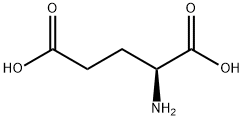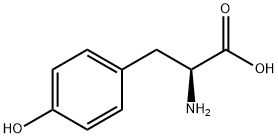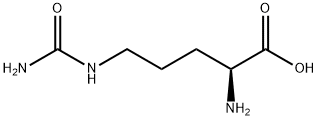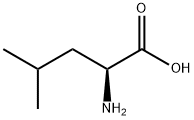L(+)-Glutamic acid , Ultra -pure, ≥99.5%(NT) , 56-86-0
Synonym(s):
L-Glutamic acid;Glu;Heavy carbon and nitrogen isotopes in L -glutamic acid;L-α-Aminoglutaric acid, Glu, L-alpha-Aminoglutaric acid;(S)-2-Aminopentanedioic acid
CAS NO.:56-86-0
Empirical Formula: C5H9NO4
Molecular Weight: 147.13
MDL number: MFCD00002634
EINECS: 200-293-7
| Pack Size | Price | Stock | Quantity |
| 100G | RMB60.80 | In Stock |
|
| 500G | RMB209.60 | In Stock |
|
| 2.5KG | RMB573.60 | In Stock |
|
| others | Enquire |
PRODUCT Properties
| Melting point: | 205 °C (dec.) (lit.) |
| alpha | 32 º (c=10,2N HCl) |
| Boiling point: | 267.21°C (rough estimate) |
| Density | 1.54 g/cm3 at 20 °C |
| bulk density | 460kg/m3 |
| FEMA | 3285 | L-GLUTAMIC ACID |
| refractive index | 1.4300 (estimate) |
| storage temp. | 2-8°C |
| solubility | 1 M HCl: 100 mg/mL |
| form | powder |
| pka | 2.13(at 25℃) |
| color | White |
| Odor | at 100.00 %. mild yeast baked bread |
| PH | 3.0-3.5 (8.6g/l, H2O, 25℃) |
| optical activity | [α]20/D +32°, c = 10 in 2 M HCl |
| Odor Type | yeasty |
| biological source | non-animal source |
| Water Solubility | 7.5 g/L (20 ºC) |
| λmax | λ: 260 nm Amax: 0.1 λ: 280 nm Amax: 0.1 |
| JECFA Number | 1420 |
| Merck | 14,4469 |
| BRN | 1723801 |
| InChIKey | WHUUTDBJXJRKMK-VKHMYHEASA-N |
| LogP | -3.69 |
| CAS DataBase Reference | 56-86-0(CAS DataBase Reference) |
| NIST Chemistry Reference | L-Glutamic acid(56-86-0) |
| EPA Substance Registry System | L-Glutamic acid (56-86-0) |
Description and Uses
L-Glutamic acid, or L-2-aminopentanedioic acid, is a naturally
occurring amino acid of plant and animal proteins. It has a very
faint odor reminiscent of yeast or freshly baked bread. It has a
mild, somewhat sweet, meat-like taste.
The average glutamic acid content of food proteins is 20 percent.
Expressed as glutamic acid per 100 g of the edible portions,
medium fat beef contains about 2.65 g of glutamic acid; whole
liquid cow milk, 0.82 g; lean pork, 2.16 g; haddock, 2.32 g; peas,
5.58 g; soybeans, 7.01 g; commeal, 1.62 g; and whole grain wheat
flour, 4.16 g. In addition, free glutamic acid is present in many
vegetables, fish, and meats in small amounts (0. 005 to 0.23 g per
100 g) and as high as 2 g per 100 g in some varieties of cheese.
Recent estimates of free amino acids in the milk of various species
indicated that the free glutamic acid in human milk is about 0.22
g per 100 mL.
Glutamic acid and its salts are prepared commercially by hydrolysis
of gluten (wheat, corn, soybean, sugarbeet protein); by fermentation
from glucose-containing raw materials; the racemic acid
may be resolved into the d- and ι-isomer by fractional crystallization;
from 2 -cyclopentenylamine; by microbial conversion of aketoglutaric
acid; or by an alternative method, using Bacillus
megatherium-cereus; from fumaric acid using B. pumilus; from
starch.
Glutamic acid and the hydrochloride as well as the mono-sodium,
-potassium, and -ammonium salts of L-glutamic acid share similar
physical properties: they are nearly odorless, white, free-flowing
crystalline powders, and except for glutamic acid and glutamic
acid hydrochloride, are freely soluble in water. Glutamic acid is
slightly soluble and glutamic acid hydrochloride moderately soluble
in water. The pH of a saturated solution is about 3.2.
A non-essential amino acid. Its salt form (glutamate) is an important neurotransmitter that plays a key role in long-term potentiation and is important for learning and memory. It is also a key molecu le in cellular metabolism.
Safety
| Symbol(GHS) |  GHS07 |
| Signal word | Warning |
| Hazard statements | H315-H319-H335 |
| Precautionary statements | P261-P271-P280 |
| Hazard Codes | Xi |
| Risk Statements | 36/37/38 |
| Safety Statements | 24/25-36-26 |
| WGK Germany | 2 |
| RTECS | LZ9700000 |
| F | 10 |
| TSCA | Yes |
| HS Code | 29224200 |
| Hazardous Substances Data | 56-86-0(Hazardous Substances Data) |
| Toxicity | LD50 orally in Rabbit: > 30000 mg/kg |




